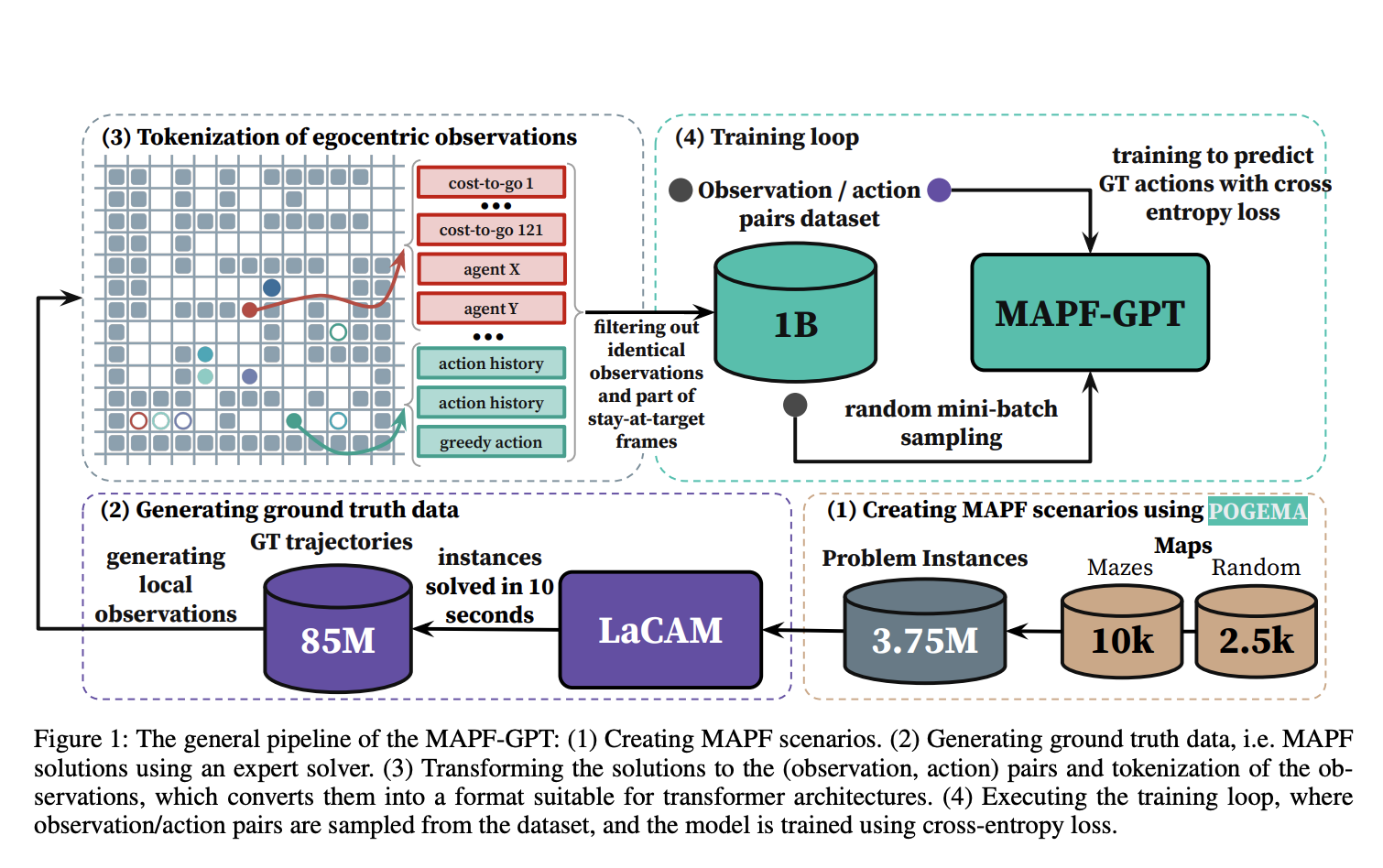
Practical Solutions for Multi-Agent Pathfinding (MAPF)
Challenges and Innovations
Multi-agent pathfinding (MAPF) involves routing multiple agents, like robots, to their individual goals in a shared environment, crucial for applications such as automated warehouses, traffic management, and drone fleets.
Traditional methods struggle with complexity and computational demands, but MAPF-GPT, a decentralized approach, stands out for its scalability and efficiency.
MAPF-GPT: Decentralized and Scalable
MAPF-GPT uses imitation learning and a transformer-based model to make decentralized decisions, without the need for inter-agent communication or additional planning steps.
The model’s zero-shot learning capabilities allow it to solve new problems and generalize to new environments, outperforming traditional solvers and learning-based models.
Advantages and Applications
MAPF-GPT outperforms state-of-the-art decentralized MAPF solvers, achieving higher success rates and faster computational requirements, particularly in large-scale warehouse simulations.
Its streamlined solution offers significant advantages in speed, scalability, and generalization over existing methods, making it suitable for real-world applications with large agents.
For more information, check out the Paper and GitHub.
If you want to evolve your company with AI, stay competitive, and use MAPF-GPT for multi-agent pathfinding, connect with us at hello@itinai.com and stay tuned on our Telegram t.me/itinainews or Twitter @itinaicom.



























